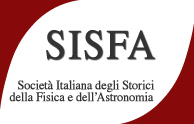Speaker
Description
In 1894 Pierre Curie introduced into theoretical physics the first symmetry laws; they concern symmetry breaking. But the content of his paper remained longtime obscure.
Previous my papers showed that 1) the same word “symmetry” is a double negation without a corresponding affirmative word; that means the failure of the double negation law; hence, this word belongs to intuitionist logic; 2) the metaphysical part of Curie’s paper represents an inconclusive effort of generalizing experimental data; 3) the theoretical organization of Curie’s paper is not a deductive-axiomatic theory; rather, it is substantially a problem-based one.
Owing to the many difficulties met in accurately recognizing the theoretical content of Curie’s paper, in past decades some scholars extracted from it the central proposition. Many versions of “Curie’s principle” resulted. They are listed and their logical, mathematical and physical differences are examined. In particular, the question of its range of validity is discussed in both cases of its belonging to each kind of the two theoretical organizations.

